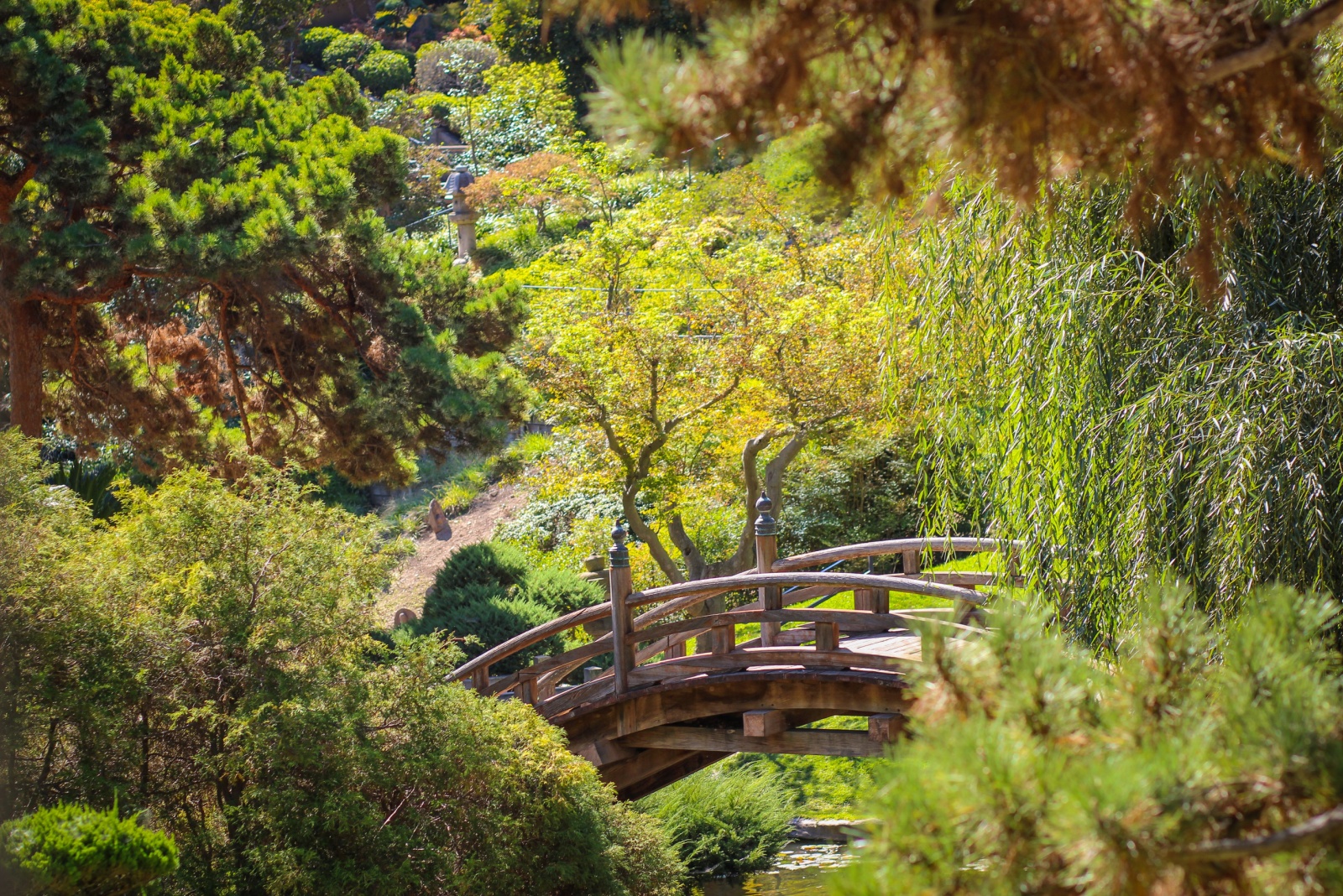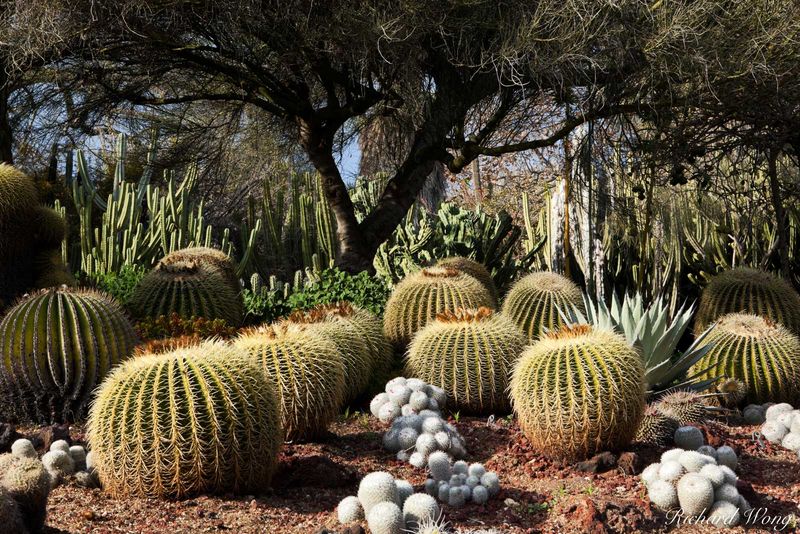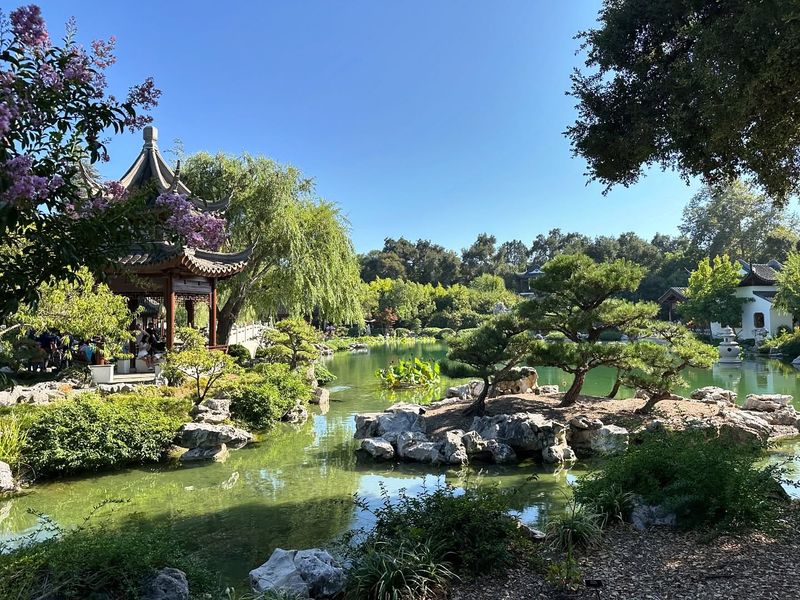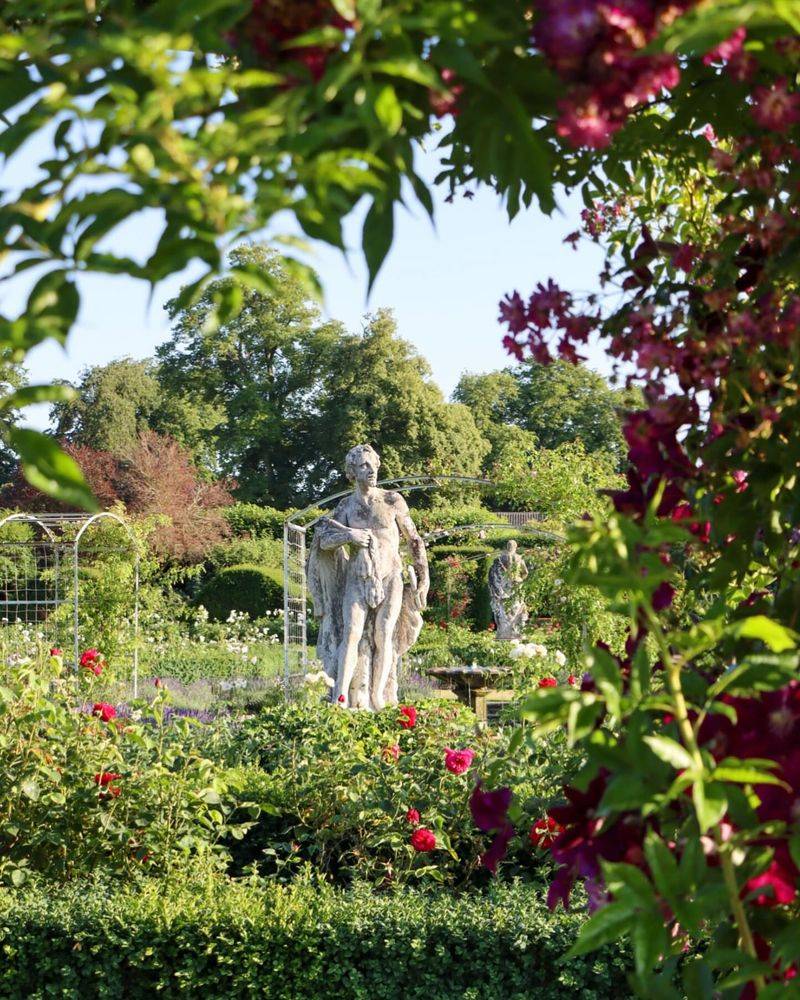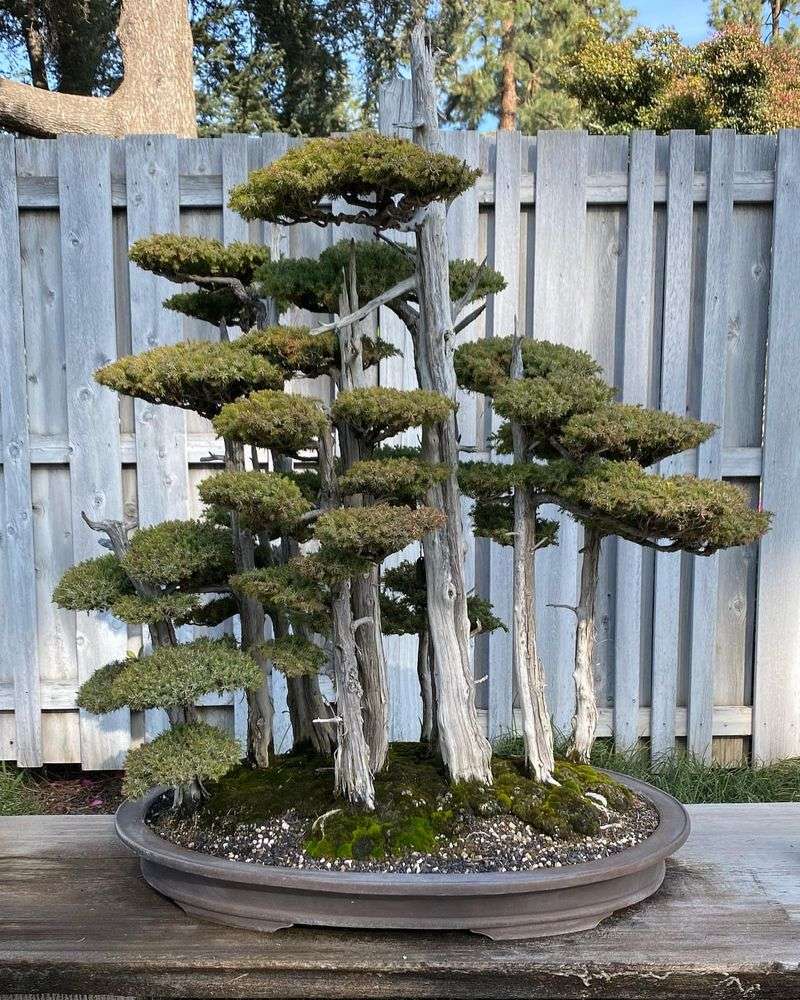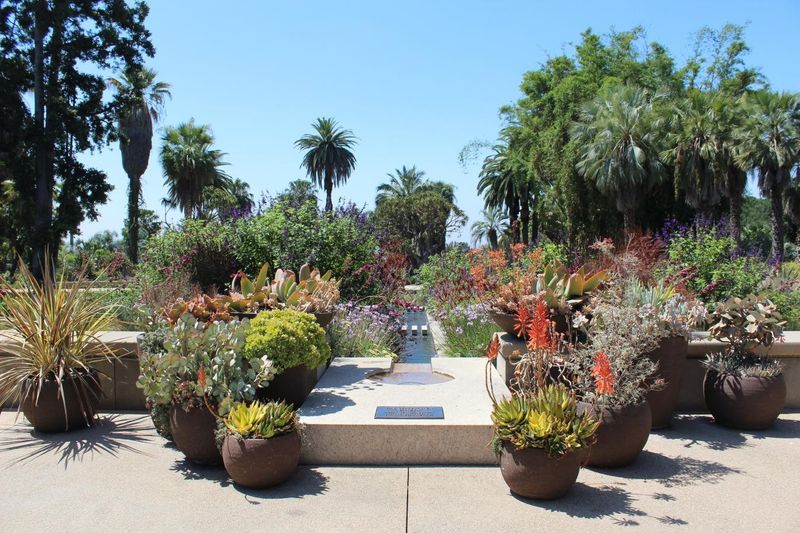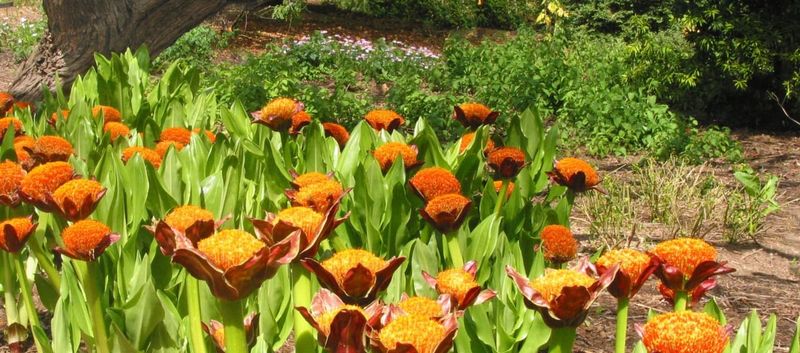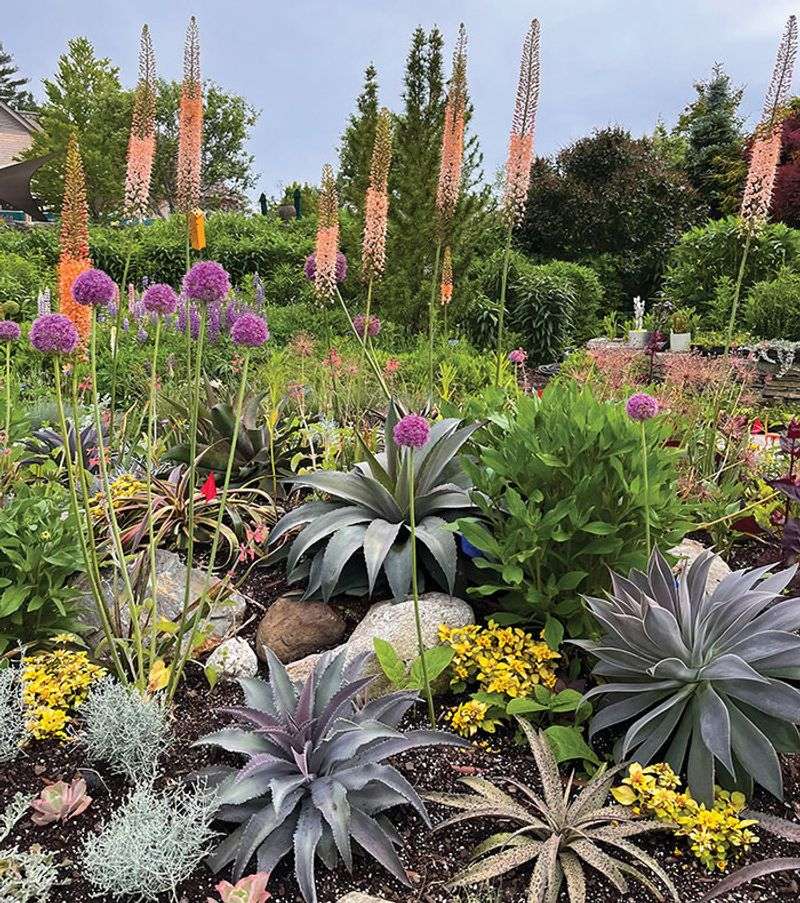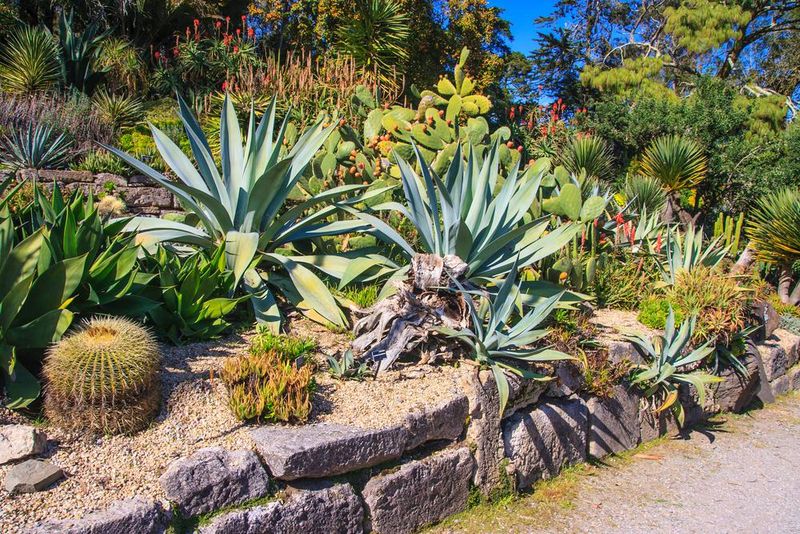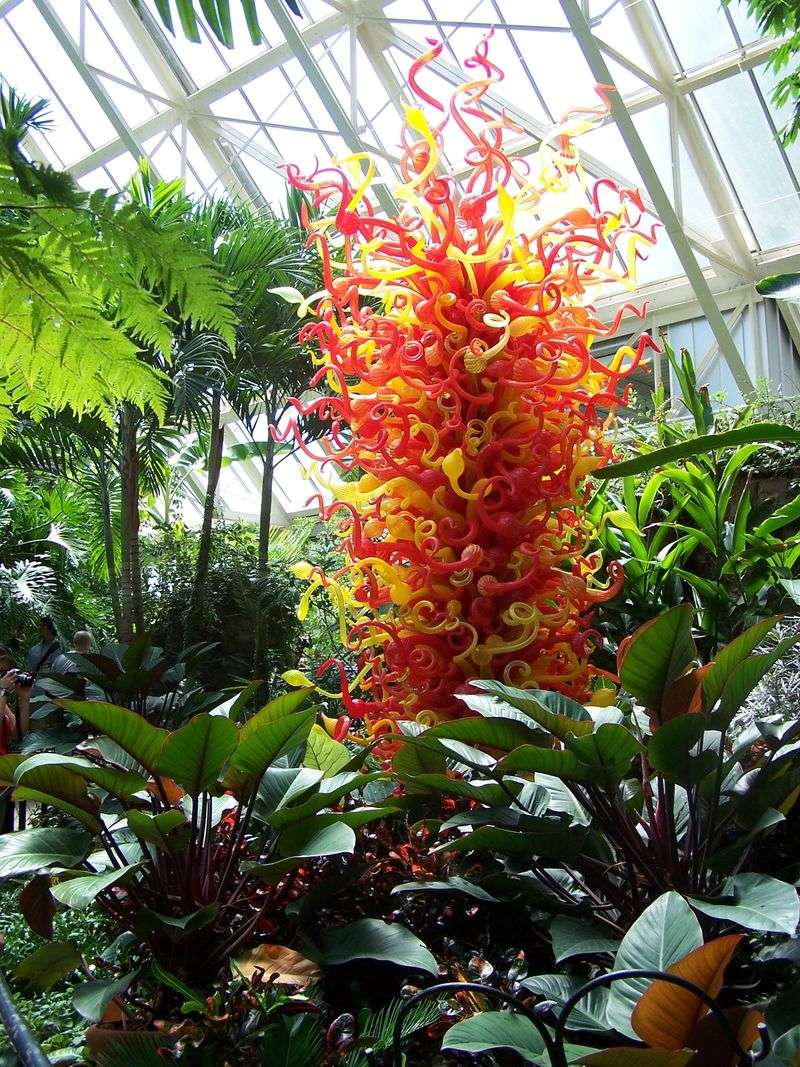The Huntington Botanical Gardens in Pasadena feel like a living canvas, where nature and art flow together effortlessly. Spread across more than 120 acres, the grounds invite visitors into a world where creativity blooms alongside rare plants.
It’s a place where design and discovery go hand in hand. From Japanese serenity to desert drama, each themed garden offers a distinct experience. Artistic elements are woven into the landscape, turning pathways and plantings into visual poetry. It’s garden design elevated to an expressive form.
Whether you’re drawn to the botanical collections or the curated art installations, the Huntington offers more than beauty—it sparks reflection. Here, plants don’t just grow; they tell stories, evoke emotion, and celebrate the art of nature.
1. Sculptural Echoes In The Desert Garden
Massive stone sculptures rise among the spiny desert plants, creating visual dialogues between natural and carved forms. The weathered textures of ancient-looking art pieces mirror the rugged surfaces of century-old cacti.
Sunlight plays across both elements throughout the day, transforming shadows and highlighting unexpected similarities. Many visitors find themselves pausing longer here than anticipated, captivated by these thoughtful juxtapositions.
The garden’s layout encourages contemplation about time itself – both geological and human-made artifacts seemingly frozen in a shared moment.
2. Chinese Garden’s Poetic Pavilions
Lakeside pavilions frame carefully composed plant scenes like living paintings. Traditional Chinese architectural elements stand in harmony with meticulously pruned pines and flowering plums that change with the seasons.
Water reflects both structures and plants, doubling the visual impact and creating an immersive experience. Garden designers have thoughtfully positioned each element according to centuries-old principles that balance the dynamic energy of the landscape.
Stone pathways guide visitors through transitions between enclosed spaces and open vistas, revealing new artistic compositions at every turn.
3. Rose Garden Bronze Figures
Graceful bronze figures stand among thousands of fragrant roses, creating intimate moments throughout this beloved garden. The sculptures’ permanent forms contrast beautifully with the seasonal cycles of the surrounding flowers.
Morning light casts the bronze figures in a golden glow that complements newly opened rose blooms. Visitors often remark how the artistic elements enhance rather than compete with the garden’s botanical stars.
Several pieces were specifically commissioned to complement particular rose varieties, creating thoughtful dialogues between the garden’s living and crafted elements.
4. Japanese Garden’s Living Sculptures
Ancient bonsai trees, some over 300 years old, represent the ultimate fusion of horticulture and artistic expression. Each miniature tree embodies decades or even centuries of careful cultivation and artistic vision.
The garden’s design incorporates stone arrangements and water features that complement these living sculptures. Traditional elements like the moon bridge and tea house provide architectural context that enhances the overall artistic composition.
Seasonal changes transform the garden’s appearance, with Japanese maples creating a particularly stunning display of natural artistry in autumn.
5. Shakespeare Garden’s Literary Inspirations
Plants mentioned in Shakespeare’s works grow alongside quotes and character references carved in stone. Lavender, rosemary, and other herbs create sensory connections to the Bard’s literary world.
Garden designers have thoughtfully arranged plants to evoke Elizabethan garden aesthetics while incorporating modern artistic elements. The space functions as both a botanical collection and an outdoor literary museum.
Benches positioned throughout invite visitors to sit and contemplate the relationship between nature, literature, and visual arts in this uniquely themed garden space.
6. Subtropical Garden’s Architectural Remnants
Weathered architectural fragments peek out from lush tropical foliage, creating an atmosphere of discovery and ancient mystery. The contrast between precise human-made lines and organic plant growth creates a compelling visual tension.
Towering palms and broad-leafed plants frame these artistic elements in constantly changing ways as growth patterns shift. Sunlight filtering through the dense canopy creates dramatic spotlighting effects on the stone features.
This garden area particularly exemplifies how time itself becomes an artistic medium, with plants gradually integrating with and sometimes reclaiming human-created structures.
7. Children’s Garden’s Playful Integration
Whimsical sculptures and interactive water features engage young visitors while teaching botanical concepts through artistic play. Oversized plant models allow children to experience botanical elements from unexpected perspectives.
Colorful mosaics incorporate plant motifs that mirror the actual growing specimens nearby. The garden designers have thoughtfully created spaces where art encourages physical exploration of the natural world.
Even the garden’s pathways become artistic elements, with embedded fossils and footprints that connect to the botanical themes in surprising and delightful ways.
8. Australian Garden’s Aboriginal Influences
Earth-toned art installations draw inspiration from Aboriginal traditions, complementing the unique textures and colors of Australian native plants. Circular patterns in both the hardscaping and planting designs reflect indigenous artistic principles.
Eucalyptus trees create a sensory experience with their distinctive fragrance, connecting visitors to Australia’s landscape. The garden demonstrates how cultural artistic traditions can inform contemporary botanical display techniques.
Interpretive elements throughout help visitors understand the deep connections between plants, art, and cultural identity in this thoughtfully designed space.
9. Conservatory’s Glass Art And Rare Plants
Delicate glass installations complement the exotic tropical specimens in this climate-controlled environment. Light plays through both the architectural glass and artistic elements, creating constantly changing visual experiences.
Rare orchids and carnivorous plants become living art pieces through thoughtful display techniques. The conservatory itself represents a masterful blend of architectural artistry and botanical science.
Seasonal art exhibitions are often hosted here, with contemporary artists creating installations specifically designed to dialogue with the unique plant collections and atmospheric qualities of the space.

